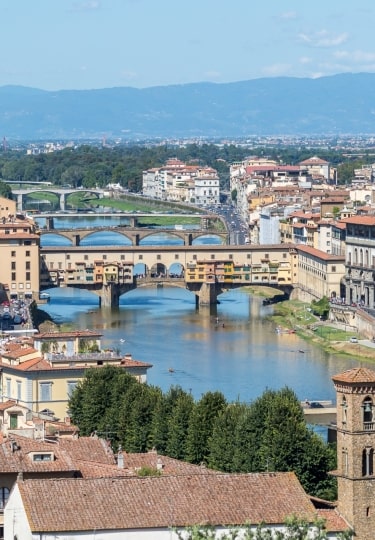The best time to visit Florence, Italy is in the spring and the fall, with May and September being optimal months. Having said this, the Renaissance treasures and world-famous galleries of this beautiful city are open year-round, and you can marvel at Michelangelo’s David and the magnificent Duomo at any time of year.
Florence lies inland from the coast, in central Italy, and enjoys a Mediterranean climate. This means the city experiences hot, dry summers and mild winters. Come in summer for the sunshine, or in winter for fewer crowds. Or time your visit for the shoulder seasons for the best of both worlds.
Visiting Florence by Season
Summer
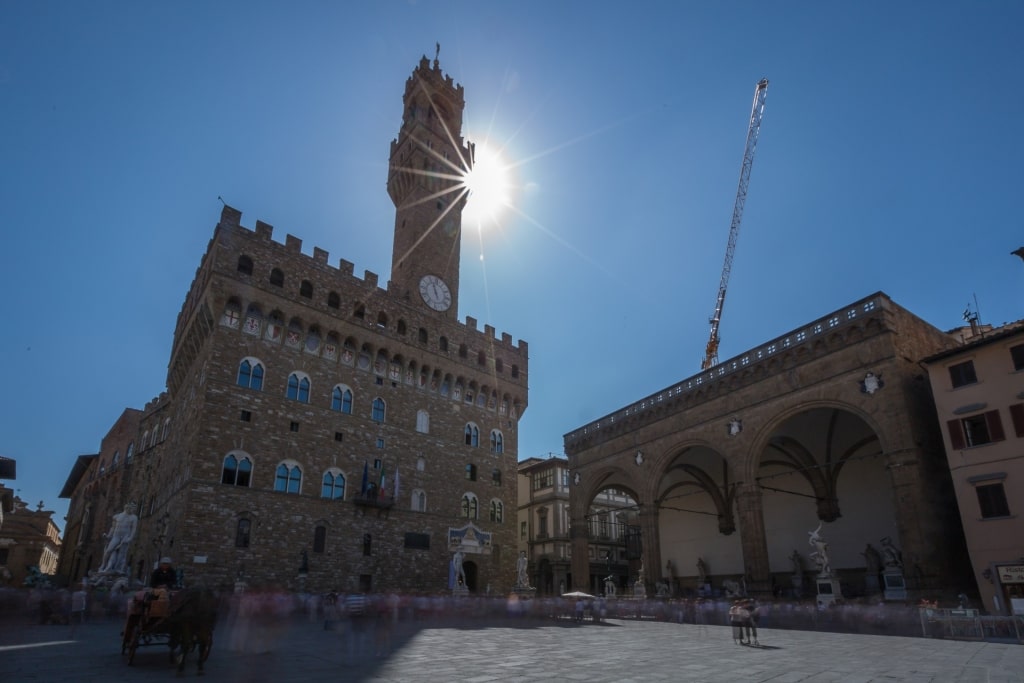
Piazza della Signoria
June, July, and August in Florence are hot and often humid. The average high in August is 91°F (32.6°C), while the daily average is 78.1°F (26.5°C). Rainfall is low; July is the driest month of the year, receiving 1.4 inches (35mm) of precipitation.
The city is busy with visitors in summer, while locals tend to head for the coast on vacation, especially in August.
While good weather is almost guaranteed in summer, you do need to pace yourself to get the most out of the city. Be sure to pre-book attractions that Florence is known for, such as the Uffizi and the Accademia galleries, to avoid standing in line in the sun.
Spend the hottest part of the day inside one of the many museums or churches or relaxing over a leisurely lunch. Do as the locals do and take a stroll early in the evening, when the heat has eased.
Read: The Ultimate Guide to Food in Florence
Fall
Temperatures ease off dramatically in fall, although September is still a hot month, with a daily average of 69.9°F (21°C). September and October are wonderful months to visit Florence, coinciding with the wine harvest, truffle and mushroom season, and later, the olive harvest.
Locals feel a close connection to nature here and will buy their fresh fruit and vegetables from the city’s colorful markets, which are at their best. The colors of the surrounding Tuscan countryside turn to gold in fall.
Rainfall slowly increases throughout the fall as the days get shorter. November is the wettest month, receiving 4.5 inches (115mm) of precipitation.
Winter
Winters in Florence are relatively mild, with moderate rainfall and temperatures that are usually above freezing. January is the coldest month, with average daily temperatures of 44°F (6.7°C) and rainfall of 2.4 inches (60mm).
If the northerly Tramontana wind blows, temperatures can drop, and the city may glisten with frost in the early mornings. Snowfall is rare, though.
Spring
Spring is a wonderful time to visit Florence as the city is in bloom with spring flowers, particularly the frothing mauve of wisteria. The days are getting longer and temperatures are mild and pleasant.
April and May are better than March if you enjoy outdoor dining; by May, average daily temperatures are a balmy 65.1°F (18.4°C), and all the restaurants have their al-fresco tables set up. Rainfall is a bearable 2.8 inches (70mm), and there are eight hours of sunshine daily on average.
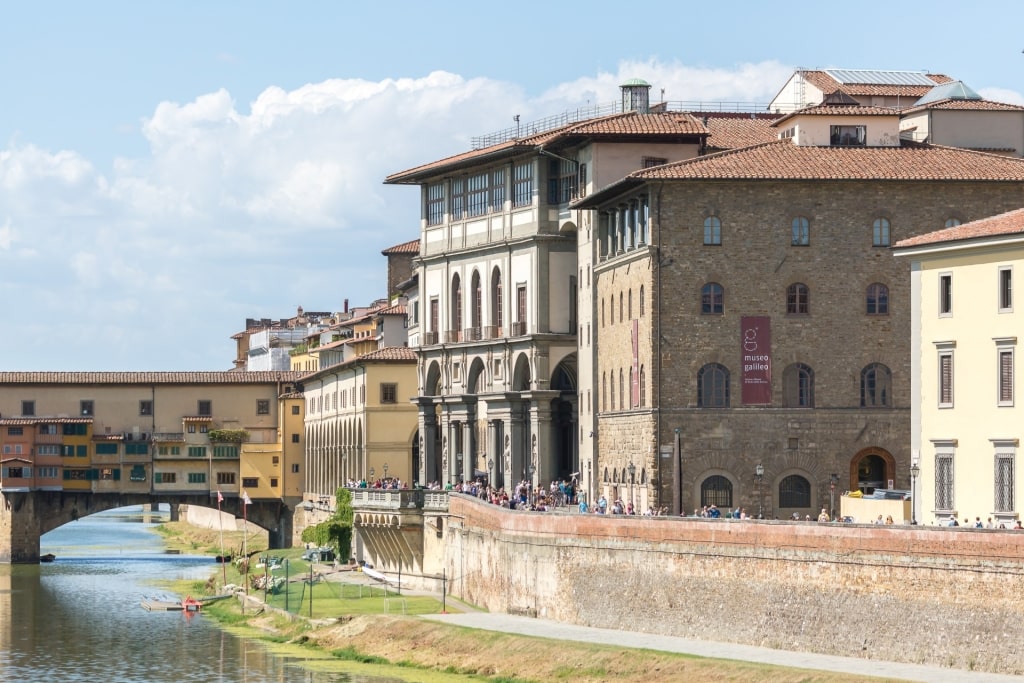
Ponte Vecchio
When Is Rainy Season?
The rainiest months in Florence are October and November, while April can also bring unsettled weather and spring showers. In November, the city receives on average 4.5 inches (115mm) of rain. But there are so many indoor activities in Florence that the occasional wet day shouldn’t be a deterrent to visiting.
When Is High Season?
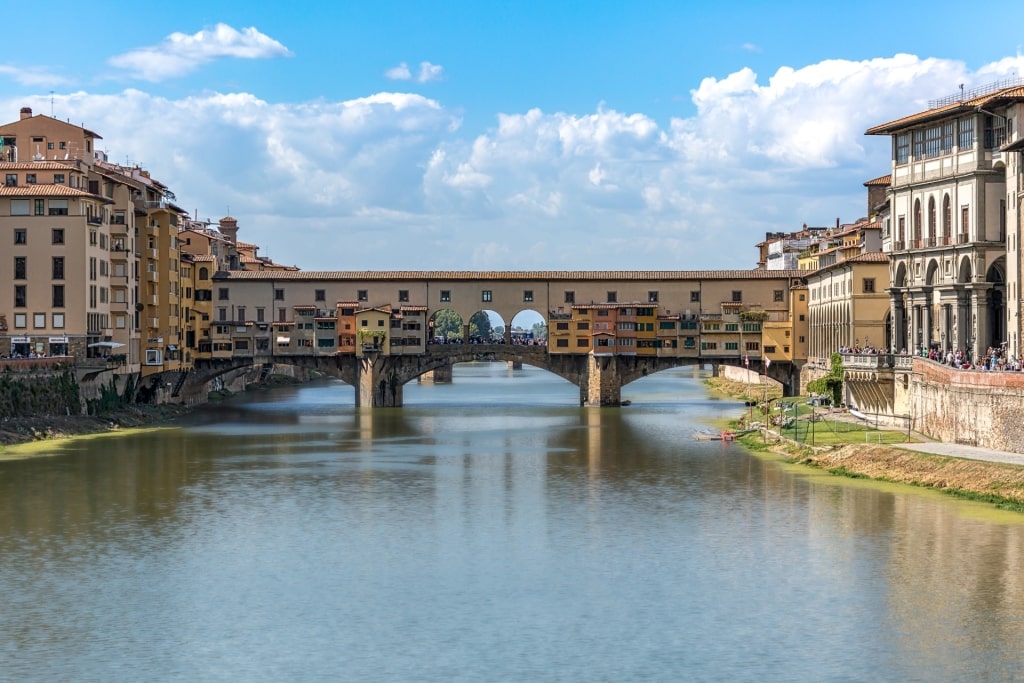
Ponte Vecchio
High season in Florence is July and August, when the city is busy and the temperatures sizzling. In August, locals head en masse to the coast, but the city still teems with visitors enjoying the sunshine and the sights.
A busy cultural calendar means there are other peaks in visitor numbers. Easter is a big event in Italy, with parades and ceremonies. In December, Christmas markets spring up all over the city, with the biggest and most stylish in the Piazza Santa Croce.
Read: Two Days in Florence
When Is Shoulder Season?
Shoulder season, the best time to go to Florence, Italy, is April to May and September to October. As Europe’s visitor season gets longer, though, these can also be busy months.
These are the best times to visit Florence for multiple reasons. Fewer crowds, spring flowers, the fall harvest, al-fresco dining, and pleasant temperatures all add up to show off the city at its most alluring.
When Is Low Season?
Low season in Florence is late November, when there’s more rainfall and the days are short, and January to February, when the city is quiet. But these months are still a great time to visit. You will have Florence’s museums and galleries to yourself, and as this is a thriving city with a sizable population as opposed to a seasonal coastal town, all the shops and restaurants will still be open.
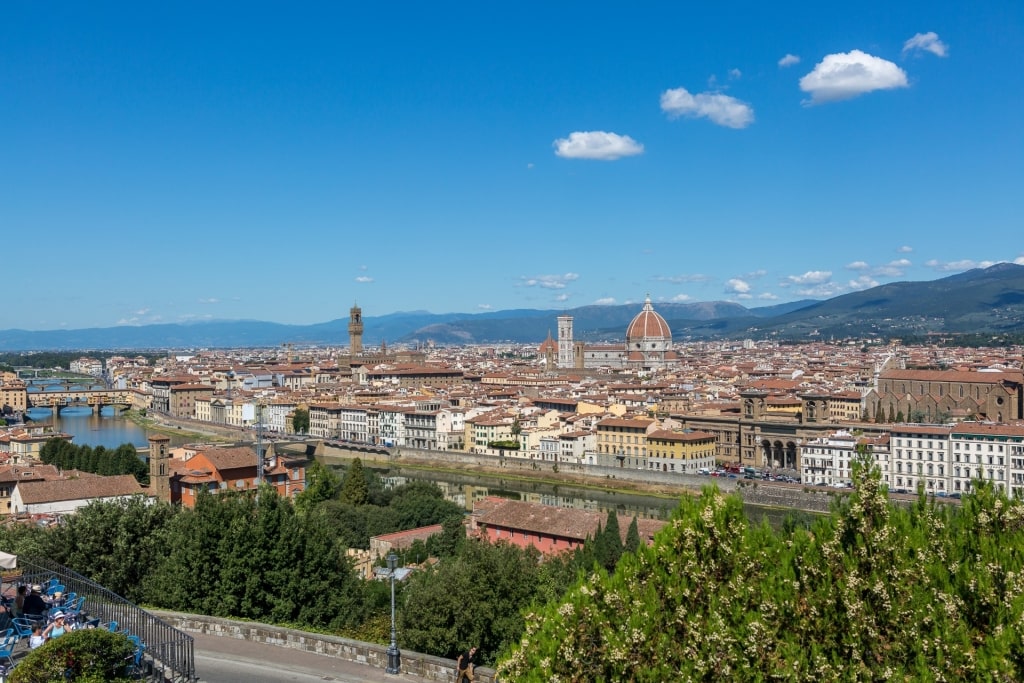
Florence
Discover the beauty of the city for yourself on one of Celebrity’s cruises to Florence.
